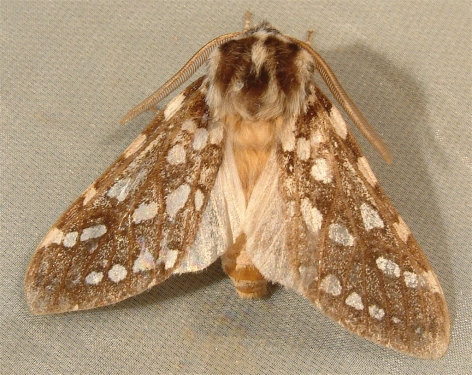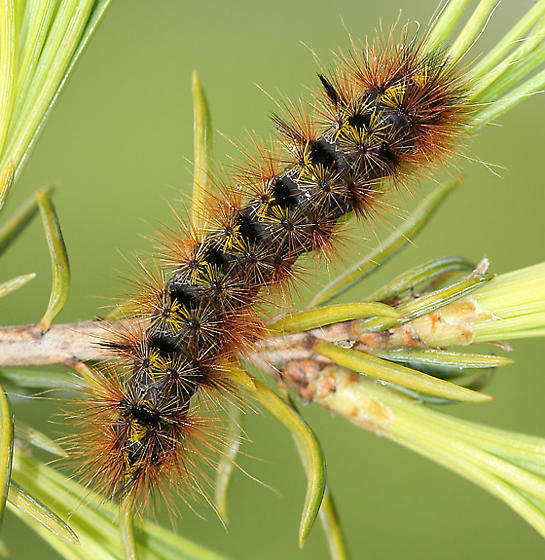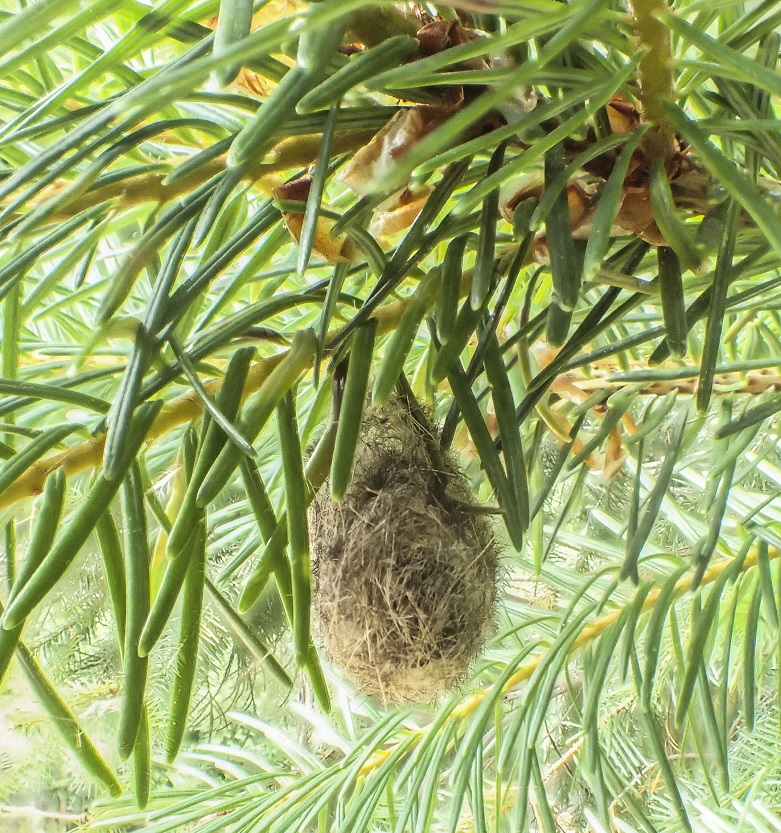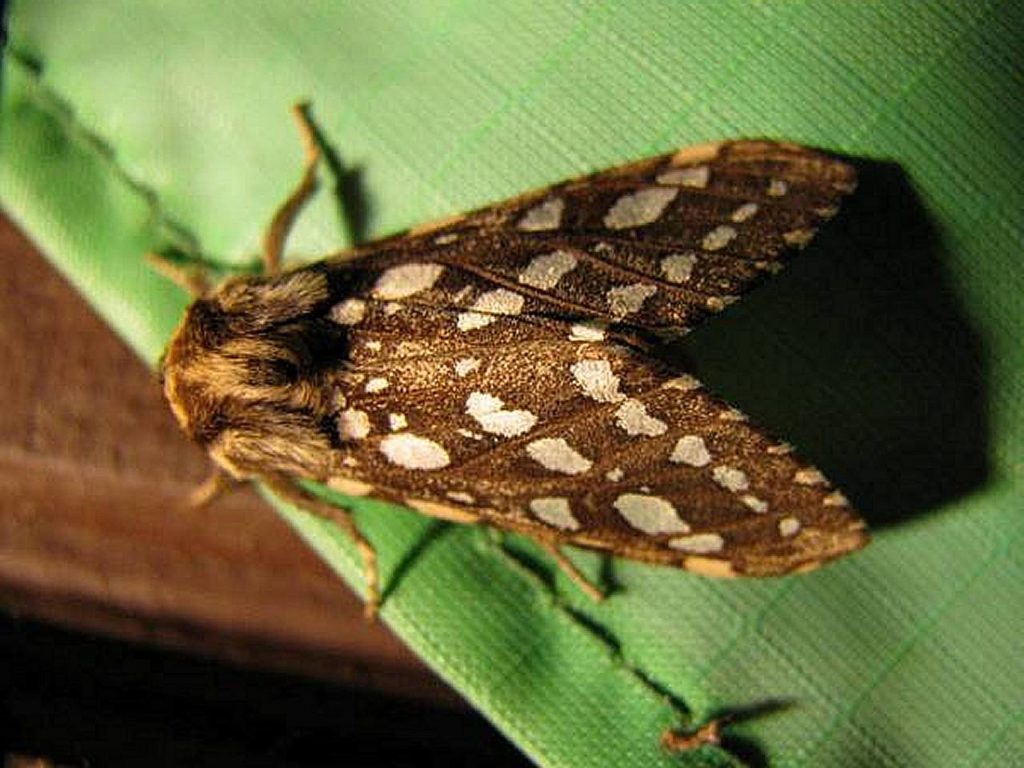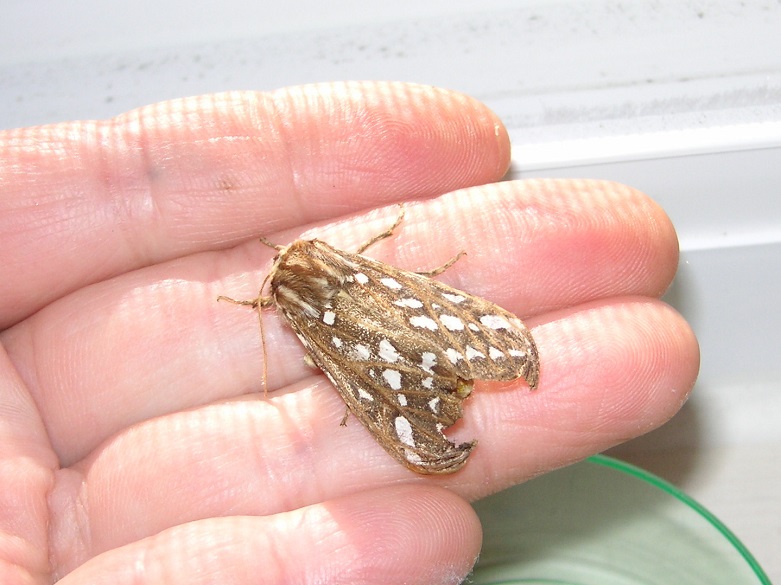Silver Spotted Tiger Moth (Lophocampa argentata)
The Silver Spotted Tiger Moth is a widespread species in the United States, their caterpillar infamous for defoliating Douglas firs. It gets its name from the silvery-white spots on its wings, with two subspecies: Lophocampa argentata argentata and Lophocampa argentata subalpina.
calscape.com
Scientific Classification
- Family: Erebidae
- Genus: Lophocampa
- Scientific Name: Lophocampa argentata
Description and Identification
Caterpillar
Larvae are smaller than 4 cm in length. Their dark bodies are covered with yellowish-orange and black bristles all over. It is a member of the “woolly bear” caterpillar species, active throughout fall and winter. They begin feeding in the fall, overwinter during the colder days and resume feeding on warmer winter days till spring.
Adult Moth
Sexual Dimorphism: Present but not prominent
Color and Appearance
There is no significant disparity when the wings are opened or closed.
Forewing: It is brown and covered with silvery-white spots.
Hindwing: It is entirely white with a brown spot at the end of each wing.
Average wingspan:About 8cm (as seen in other tiger moths)
Season: Mid- July to Mid- August
Egg
They are emerald green, with around 450 in a single cluster laid on the host plant’s branches.
Quick Facts
| Distribution | British Columbia to southern California; and along the eastern sides of Arizona, New Mexico, Utah, Nevada, Wyoming, Colorado, and probably Northern Mexico |
| Habitat | Mountainous regions where Douglas firs grow |
| Predators | Birds, parasitic flies, and wasps |
| Lifespan of Adults | 1 month |
| Host Plants | Douglas firs, true firs, spruce, and pines |
| Adult Diet | Does not eat |
Did you know
- Packard, an American entomologist, described this species in 1864.
- The bristles on the caterpillar are poisonous and should be handled with care. However, if touched by accident, there will be no significant harm done.
Scientific Classification
- Family: Erebidae
- Genus: Lophocampa
- Scientific Name: Lophocampa argentata

